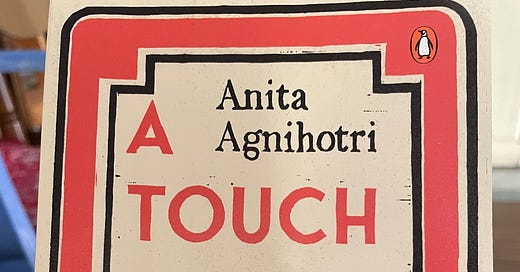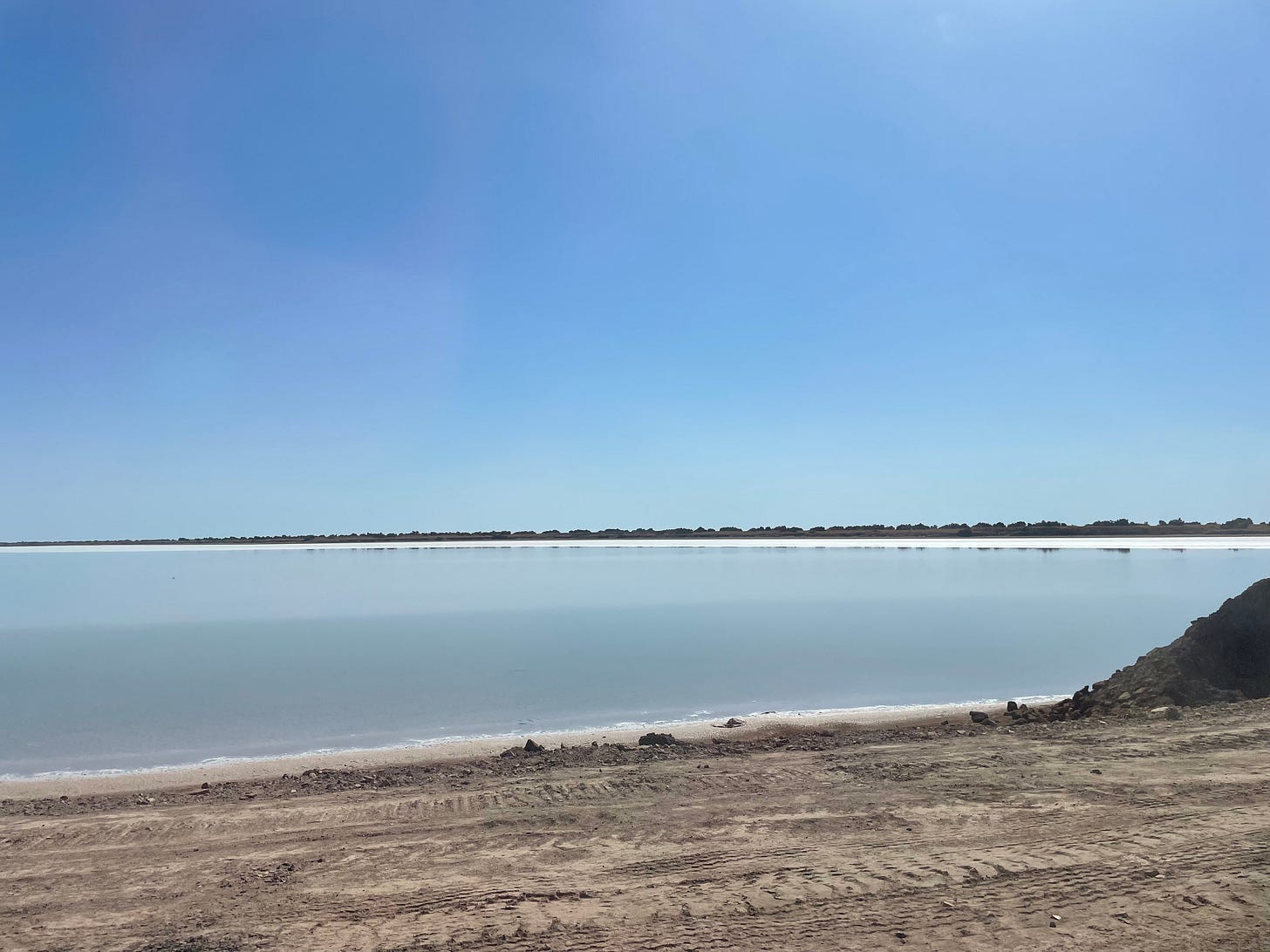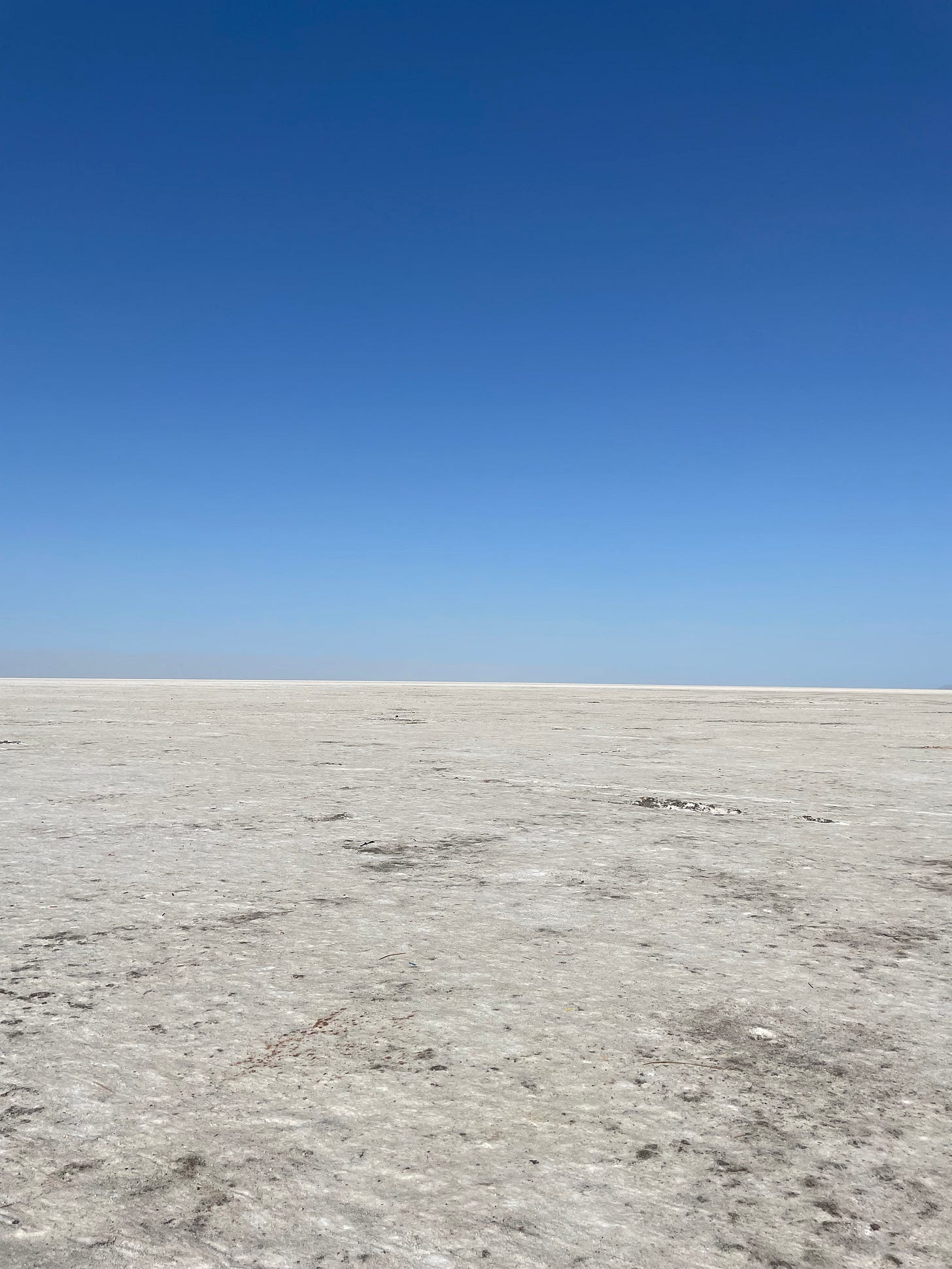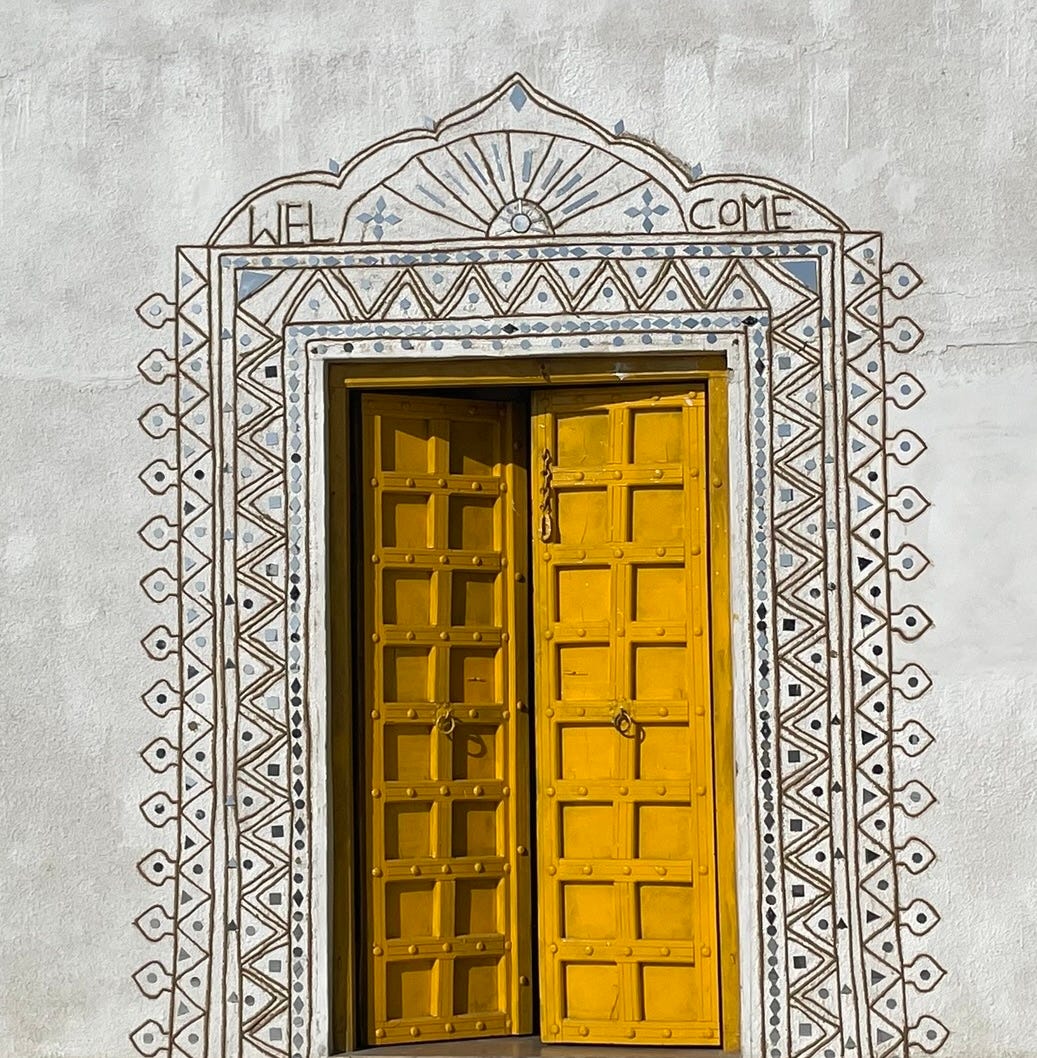A SALT FARMER WORTH HIS SALT
Anita Agnihotri writes about the plight of salt farmers in Gujarat in a novel that feels like something between a white paper and a documentary.
When I landed in India two weeks ago, as usual, a stack of books was waiting for me in my late father’s home in Chennai. They were all books in translation, of course, and among them was Anita Agnihotri’s A Touch of Salt. Translated from the Bengali language by Arunava Sinha, this novel is a moving story about the people in the Agariya community whose livelihood is tied to the Rann of Kutch in India’s Gujarat.
The Agariya people have been farming salt for over 600 years in the states of Gujarat and Rajasthan. Known for their expertise in salt production, they migrate to these salt farms for eight months of the year, building small huts to prepare salt pans. During the monsoon season, they return to their native villages.
I didn’t know about the Agariyas when I was on a trip to Kutch in February 2023. During my drive through the lake of the Rann of Kutch, I was awed by the vast white desert surrounding us as we drove on the brand new road connecting northern Kutch with the ruins at Dholavira. In India, there is always a moment when the most insipid and humdrum of scenes leads to a panorama of heart-stopping beauty. On that morning’s drive, miles of arid land opened out to an expanse of blue and white as I’d never seen before.
The Rann of Kutch. This part of the Thar Desert is the salt land on India’s western frontier, which includes a marshy green belt and treeless forest reserves, and is the habitat of wild asses, cranes, flamingos, and other migratory birds.
A Touch of Salt narrates the tale of salt. In India, this mineral is a symbol of resistance in the 1930s against the British Empire. Upon India’s independence, the government that supplanted the Raj thought nothing of the exploitation of salt farmers in the Kutch region. The iconic mineral is a focal point in this novel making us ponder the fruits of India’s independence. One of the questions it raises is that of progress: What is the guarantee that freedom from one ruler actually guarantees and safeguards freedom for all the people of the land? Whether it’s the British Crown or the Indian government, when decisions are made, it’s always the poor man who suffers.
The novel exposes the plight of the Agarias and the result of their toil harvesting salt on their physical bodies. In intensely moving passages we begin to understand how some vocations fundamentally alter the body.
Wading through saline water and earth every day has atrophied their calves beneath their knees, while a lifetime of salt gathers in their marrow.
This is why when a salt farmer dies, his torso burns on the pyre, but not his legs. The family proceeds to separate the legs from the ashes and unburnt remains of the body before burying them underground.
The Rann of Kutch, a large marshy salt flat, has been the seat of many power struggles. Originally a port city in the Indus Valley, it is a vast barren landscape in which the northern edge of the Rann of Kutch marks the border between India and Pakistan.. In this salt marsh, salt is produced through a process called salt panning.
Kharaghoda. The village where Malati and Vishnuram live. A small habitation of ten thousand people. It was a large and flourishing place once upon a time, gleaming and affluent, no less than a town in the British era. “Khara” means “salty”, and “ghoda”, “mound”. Kharaghoda, the village of salt.
Under colonial rule, the India Salt Act of 1882 enforced a government monopoly on the collection and manufacture of salt. The Rann of Kutch became the primary location of this contentious ruling because the British banned Indians from using the ample salt available from the marsh, and instead, packaged the salt under heavy taxes to sell for a profit. Indians near the coast were hit hard by the Act. What was once ubiquitous was now inaccessible.
A Touch of Salt tells the story of these salt farmers in the old and new India by also interleaving the story of Mahatma Gandhi’s quest for freedom and his protest against the Salt Act. In every alternate chapter we follow the tale of the preparations for the salt satyagraha in March 1930, an act of nonviolent civil disobedience in colonial India, led by Mahatma Gandhi. The 24-day march lasted from 12 March 1930 to 6 April 1930 as a direct action campaign of tax resistance and nonviolent protest against the British salt monopoly.
Bapu had always said that the poor need more salt than the rich. And their cattle need salt too. Salt is created naturally in the sea, as also in the salt-laden earth of the desert far from the coast. The people of Gujarat had been making salt for hundreds of years. But the British had begun importing salt, which was entirely unnecessary for anything besides increasing revenues.
In a country where the crystallizing of salt was a natural process, the British government was importing salt and taxing its sale—what could be a more grievous conspiracy to keep the common people bound in the chains of subservience.

In Agnihotri’s novel, this arid salt flat is home to many families that are forgotten by the Indian government in the new, independent India. They receive no water or education or utilities for their homes now that the government of India has decided that the entire Rann is a reserved forest area. We follow the story of one Tribhuvan Patel, a salt harvester, as we read the sections about Gandhi’s Salt March.
The irony of the Salt March of the 1930 is that the freedom that it ultimately brought to India failed to guarantee a better life for salt farmers. Pitted against the struggle for independence of India’s freedom fighters is the daily predicament of these penurious salt farmers. In every odd chapter of Agnihotri’s novel, we are reminded that the tyrannical hold over the livelihoods of these people has merely changed hands in a different era. The players are now domestic in origin, that’s all, for greed and imperialism can take on many forms.
We watch the dilapidation of all the systems that had been put in place for the Agarias by the British government. During the time of the white man, there were measures in place to help the Agaria community live a reasonably balanced life from one monsoon to another.
To someone whose eyes had turned white at the sight of the village surrounded by mountains of salt and the desert devoid of grass or plants or trees or grains, looking at the colorful pictures of the natural sea or the light falling on a snow-covered Himalayan trail or the breeze caught between the swaying leaves of large trees in the forest was nothing short of miraculous.
When India attained independence, however, all the small perks disappeared and with them vanished the library, the school and, most important of all, the availability of potable water. Teachers came to teach in the schools in Kharagodha even though many adult children had to help their parents with the harvest in the desert. For many students who didn’t care to attend school the library became their university.
The pipe collapsed after some distance and became choked. The government of independent India could have repaired it, but they delayed taking action, saying, what’s the use of these ancient broken pipes, we’ll lay new pipelines for you, you’ll have water in your taps, fresh water. The Surendranagar MLA Jagdeep Patel had given his word. It was the year of the war between India and Pakistan. Since then, two other MLAs came and went but both said, our hands are tied. Then the area was declared a reserve forest. Strict laws, nothing to be done. The home of the nearly extinct wild ass.
Tribhuvan’s fight for an independent India by the side of Mahatma Gandhi later becomes the gold standard for his grandson Azad. As a child, Trubhuvan once snuck out of the village and decided to walk alongside Mahatma Gandhi—a distance of some 250 miles in 24 days—to make salt by the sea. While Tribhuvan’s child, Ram Singh, was indifferent, preferring British rule to corrupt Indian officials, his grandson Azad is unable to stand by and watch the deprivation of his people.
Years later, Tribhuvan’s grandson is vexed that independent India has forgotten about the legs that have soaked in brine for centuries to harvest most of India’s salt. Azad decides that like his grandfather he too must take up the cause of the Agarias to achieve the holy grail, a source of fresh potable water for his community of salt workers. As the story ends, this looks like an impossible feat.
A Touch of Salt is important and topical. It may be a particular tale about a tribe and its specific situation in Gujarat but its import is universal. I was reminded of the number of sand dredgers I saw in Vietnam on a recent trip; these machines feed sand for Singapore’s land reclamation projects. In the game of money-making, do countries ever consider the ecological import of an action or its impact on human lives and livelihoods? The islet of Long Phu Thuan in the Mekong River has been gradually eroded due to sand mining. I have no doubt that the lament of salt harvesters echoes across many societies.
I felt this novel may have been more powerful if it had been told simply and directly. Agnihotri spends too much time narrating the story of the Dandi March and Tribhuvan’s role in it. One of the questions that remains as we finish the novel is this: Exactly whose story is it? Why weren’t we told the entire story from Azad’s point of view?







I’ve been to Chennai! And the salt farms in Camargue, in France. That qualifies me to skip this book, right? Too much to read!
it's a serious eye opener story. You have narrated so well. I will read this novel and learn our country history. I applaud author Agnihotri to write on this important topic. Thank you Kalpana for sharing.